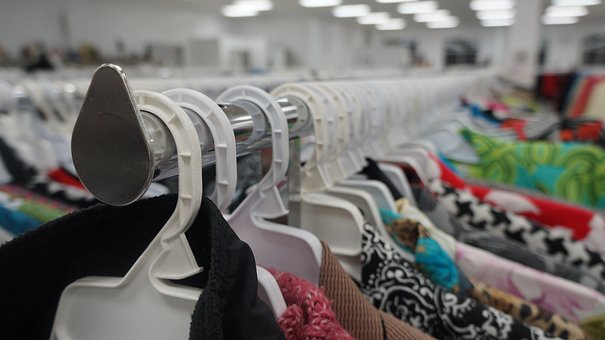The rise of consumerism has had a secondary effect on the newer generation. Instead of traveling to the nearest mall, many have decided to decline the newest trendy clothing, and have chosen to thrift instead. This new trend has struck controversy for corporate companies who push out new fashion every season. Clothing stores sell retro style clothes, but those same designs are available at the local thrift shop. However, thrifting is not limited to clothes. Furniture, electronics, books and almost anything can be discovered in the nooks of the neighborhood shop. Choosing to thrift over buying new is a cost-effective way that allows the environmentally conscious to update their lives without adding to their own carbon footprint.
Style trends may be a significant reason for the rise in thrifting, but perhaps an even greater contribution is cost. The rise in prices without an increase in wages has started what could nearly be considered a rebellion of consumerism. Without realizing it, people shop with an anti-consumption mindset by buying from secondhand sellers. This is an excellent method of resisting the unnecessary products produced almost weekly. Whether it’s a new TV or dress, the secondhand option will always be cheaper. Anti-consumerism denies corporations the sustainability to produce unneeded products while forcing them to act environmentally conscious. Without a demand for the latest line of new tech or clothing, these companies must shift the way they operate to appeal to what the public wants. Right now, due to the increase in the cost of living, people are spending their time restoring clothes and furniture, rather than their money on trendy brands.
Restoration was how I spent my time growing up. For a greater part of my childhood, I biked away to garage sales and flea markets looking for the best deals I could find. What I learned bartering for used items is that there is value in something to somebody. The man selling vintage coke bottles has a story to share, and whether they have value or not, he believes they do, and there is something magical about that. Age does not equate to uselessness, rather, it can be viewed as a mark of quality and respect. Newer products do not hold to the standards of vintage items. Their durability is unmatched, yet this sturdiness is a hazard, as these products lay in landfills for decades without breaking down.
Environmental awareness is the most pressing issue in the world today. Though other headlines avert attention for a time, going green is always in the back of peoples’ minds. With ignorant politicians and rising climate, the fear of the quality of life in the coming decades is real. As a campus, NMU is doing their part to become more green.
Many of my friends have stopped using straws, and follow the trend of thrifting over buying new. It seems like an unconventional form of recycling, rather than throwing it in a blue bin we wear it or fix it up. Yet it is the best form of recycling, there is no middle-man; nobody who has to sort and remove what cannot be reused. It is as direct as the hand-me-downs from an older sibling. The choice to thrift removes those clothes from waste, they are no longer the decades old jeans, or an ugly coffee table in a dump, but a conscious decision to make a positive change on the planet. It may feel like a minute impact, choosing a Goodwill over a Marshall’s, but if everyone contributes, it can be a major factor for restoring the environment.
The rise in secondhand shopping has become an unexpected way of going green. Every purchase from a thrift shop, likely contributes to a charity, and is one less object in a landfill. Thrifting may save a lot of money, and denying corporations their profits from their latest products may feel radical and empowering, but we have to remember the most important reason for thrifting. There is a real fear that the planet is already beyond saving. Maintaining belief that something can be done is paramount to reversing what humanity has already done. It may be small, just as metal straws and reusable bags feel miniscule, but it is a step in the right direction—a lessening of mankind’s massive carbon footprints. Next time you are out shopping, take a moment to stop by the old thrift shop. Inside may be exactly what you are looking for.
Peter Smedley is a junior,
English writing major.






















